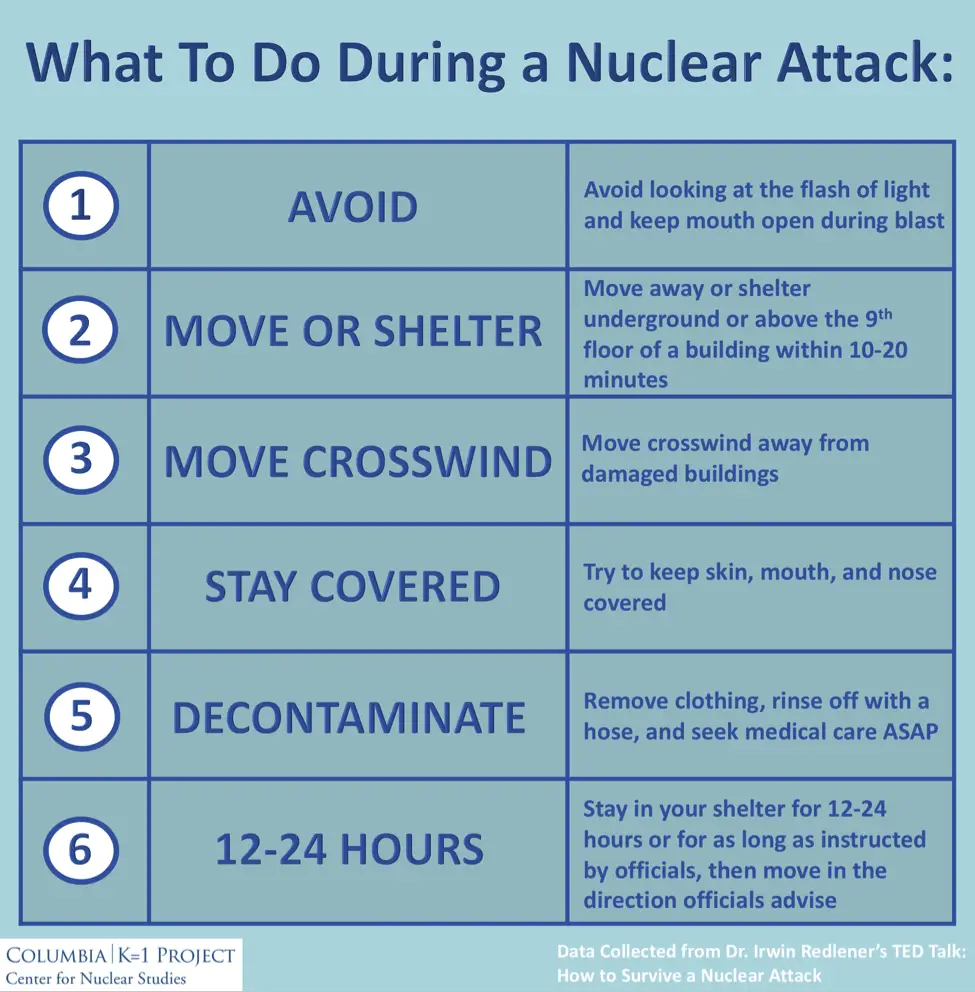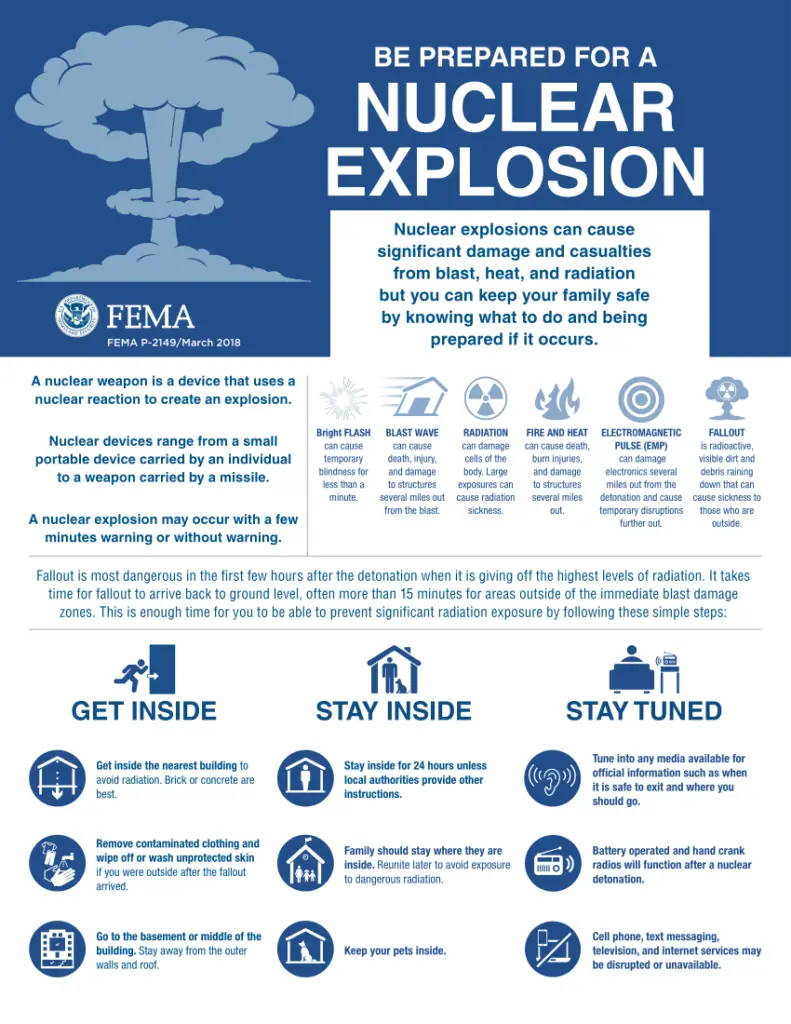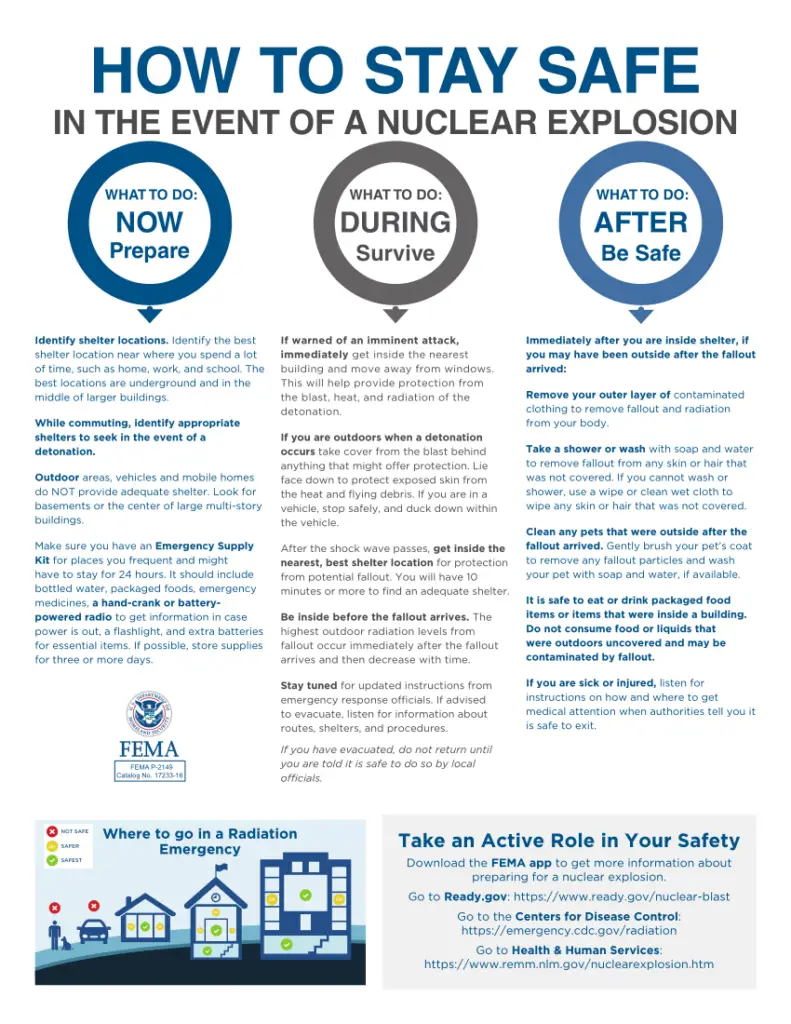Welcome, dear reader! In this article, we will guide you on how to prepare for a nuclear event to ensure your safety and survival. From creating an emergency kit to knowing evacuation routes, we will cover all the essential steps you need to take to be prepared in case of a nuclear emergency. Stay tuned to learn how you can protect yourself and your loved ones in the event of a nuclear disaster.
How To Prepare For A Nuclear Event: Safety And Survival
Have you ever wondered what you would do in the event of a nuclear disaster? It can feel overwhelming and scary to think about, but being prepared is key to your safety and survival. In this article, we will guide you through the steps you can take to prepare for a nuclear event, from creating an emergency plan to assembling a survival kit. Let’s get started!

Understanding Nuclear Events
Before we dive into how to prepare, it’s important to understand what a nuclear event is and the different types of nuclear emergencies that can occur. A nuclear event can range from a nuclear power plant accident to a detonation of a nuclear weapon. Each type of event presents specific hazards and risks that you need to be aware of in order to prepare effectively.
Types of Nuclear Events
- Nuclear Power Plant Accidents: These accidents can involve the release of radioactive materials into the environment due to a malfunction in a nuclear power plant.
- Nuclear Terrorism: This involves the intentional use of a nuclear weapon or radioactive materials by terrorists to cause harm.
- Nuclear War: A nuclear war refers to a conflict between nations involving the use of nuclear weapons, leading to widespread destruction and radioactive fallout.
Understanding the specific risks associated with each type of nuclear event will help you tailor your emergency plan and preparations accordingly.
Creating an Emergency Plan
One of the most important steps in preparing for a nuclear event is to create an emergency plan for you and your family. This plan should outline what you will do in the event of a nuclear emergency, including where you will go, how you will communicate, and what actions you need to take to stay safe.
Family Emergency Meeting Points
Designate multiple meeting points where you and your family can gather in the event of a nuclear emergency. Choose locations that are easily accessible and known to all family members. Consider selecting both indoor and outdoor meeting points in case one is inaccessible.
Communication Plan
Establish a communication plan with your family members to ensure that everyone can stay connected during a nuclear event. Choose a primary and secondary communication method, such as text messages or social media, and make sure that everyone knows how to reach each other.
Evacuation Routes
Identify evacuation routes from your home and workplace in case you need to evacuate during a nuclear emergency. Familiarize yourself with these routes and determine alternative routes in case your primary route is blocked or unsafe.
Building a Survival Kit
In addition to having an emergency plan, it’s crucial to assemble a survival kit that contains essential supplies to help you stay safe during a nuclear event. Your survival kit should include items that will help you shelter in place or evacuate if necessary.
Essential Supplies
- Food and Water: Pack non-perishable food and bottled water to last each family member at least three days.
- Medications: Include a supply of prescription medications and other essential medications.
- First Aid Kit: Pack a well-stocked first aid kit with bandages, gauze, antiseptic wipes, and any necessary medical supplies.
- Flashlight and Batteries: Include a flashlight with extra batteries to provide light in case of power outages.
- Radio: Pack a battery-powered or hand-crank radio to stay informed about emergency updates and instructions.
- Personal Hygiene Items: Include items such as toothpaste, soap, and hand sanitizer to maintain hygiene.
- Blankets and Warm Clothing: Pack blankets and warm clothing to stay warm in case of cold weather.
Additional Items
- Cash: Keep a small amount of cash in your survival kit in case ATMs are inaccessible during a nuclear emergency.
- Important Documents: Include copies of important documents, such as identification, insurance information, and emergency contacts.
- Whistle: Pack a whistle to signal for help if needed.
- Multi-Tool: Include a multi-tool with essential tools such as a knife, can opener, and screwdriver.
Sheltering In Place
If you are unable to evacuate during a nuclear event, you may need to shelter in place to protect yourself from radioactive fallout. Follow these steps to effectively shelter in place and minimize your exposure to radiation.
Find Shelter
Seek shelter in an interior room with as many walls between you and the outside as possible. Choose a room on the upper floors of your building to reduce your exposure to radioactive fallout.
Seal Windows and Doors
Close and seal all windows and doors to prevent radioactive particles from entering your shelter. Use duct tape, towels, or plastic sheeting to seal any gaps and cracks.
Turn Off Ventilation Systems
Turn off heating, air conditioning, and ventilation systems to prevent the circulation of radioactive particles. Seal air vents with duct tape or plastic sheeting.
Monitor Updates
Stay informed about the situation by listening to a battery-powered or hand-crank radio for emergency updates and instructions. Follow any directives from local authorities to ensure your safety.

Evacuating Safely
In some cases, evacuating may be necessary during a nuclear event to protect yourself and your family from immediate dangers. Follow these steps to evacuate safely and efficiently.
Follow Evacuation Orders
If local authorities issue an evacuation order, follow their instructions promptly and evacuate to a designated shelter or safe location. Take your survival kit with you and leave as soon as possible.
Use Evacuation Routes
Use the evacuation routes that you have identified in your emergency plan to evacuate safely from your home or workplace. Avoid areas with heavy traffic or potential hazards.
Stay Informed
Stay informed about the evacuation process by listening to a battery-powered or hand-crank radio for updates and instructions. Follow any directives from local authorities to ensure a smooth evacuation.
Communicate with Family
Communicate with your family members throughout the evacuation process to ensure that everyone reaches the designated shelter or safe location safely. Use your communication plan to stay connected.
Aftermath and Recovery
After a nuclear event, it’s essential to focus on recovery and rebuilding your life in the aftermath of the disaster. Follow these steps to stay safe and navigate the challenges of post-nuclear event recovery.
Check for Contamination
After evacuating or sheltering in place, check yourself and your family members for signs of contamination. Remove contaminated clothing and wash exposed skin with soap and water.
Listen to Authorities
Listen to emergency updates and instructions from local authorities to stay informed about the situation. Follow any guidelines for decontamination or medical treatment if necessary.
Seek Medical Attention
If you or your family members experience symptoms of radiation exposure, seek medical attention immediately. Follow your healthcare provider’s recommendations for treatment and monitoring.
Report Damages
Report damages to your property or belongings to your insurance company as soon as possible. Document any losses with photographs and keep records of repair costs.

Conclusion
Preparing for a nuclear event may seem daunting, but taking proactive steps to create an emergency plan, assemble a survival kit, and understand the risks can significantly increase your chances of safety and survival. By following the tips and guidelines outlined in this article, you can be better prepared to navigate the challenges of a nuclear disaster and protect yourself and your loved ones. Stay informed, stay safe, and stay prepared.
